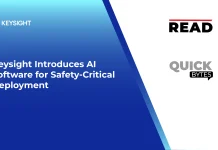With the use of the machine-learning method known as natural language processing, computers can now interpret, modify, and comprehend human language (NLP). Voice and text data from a number of communication channels, such as emails, messages, social media newsfeeds, video, audio, and others, are abundant in today’s enterprises. They use NLP software to automatically evaluate this data, which also enables them to determine the sentiment or intent of the communication and quickly reply to human conversation.
The Emergence of Natural Language Processing
Although natural language processing is not a novel concept, it is a technological area that is rapidly expanding attributable to the increased interest in human-to-machine communication, as well as the availability of vast amounts of data, powerful computing, and improved algorithms. According to Extrapolate’s projections, the global market for natural language processing will be worth USD 48.4 billion by 2030.
Humans can speak and write in several languages, including English, Spanish, and Mandarin. However, the majority of people are mostly unaware of the language used by computers, commonly known as machine code or machine language. When your device is functioning at its most fundamental level, communication occurs through millions of zeros and ones that lead to logical actions rather than words.
Creative Uses of NLP to Boost Corporate Communication
To effectively automate, streamline, and simplify operations, businesses use natural language processing (NLP) technologies and applications. Here are a few use-case examples.
- Sensitive data redaction
Businesses in the insurance, legal, and healthcare industries process, sort, and retrieve large quantities of sensitive documents, including medical records, financial information, and private data. Businesses utilize NLP technology to secure sensitive data by removing personally identifying information rather than manually evaluating it. Chisel AI, for instance, helps insurance carriers extract policy numbers, expiration dates, and other particular client information from unstructured documents using Amazon Comprehend.
- Customer engagement
NLP technology has allowed chat and speech bots to communicate with users in a more human-like way. Chatbots are being used by businesses to improve the capabilities and caliber of their customer service while minimizing operational costs. For instance, PubNub, a maker of chatbot software, uses Amazon Comprehend to provide localized chat capability to its clients all around the world. NLP is used by T-Mobile to identify specific phrases in consumers’ text messages and offer tailored recommendations. Oklahoma State University has launched a Q&A chatbot solution using machine learning technologies to address questions from students.
- Business Analytics
Marketers may fully understand how consumers feel about a company’s offerings by using NLP tools such as Amazon Comprehend and Amazon Lex. By searching for specific terms in text feedback, they can infer the moods and feelings of the customers. Success KPI, for instance, provides natural language processing technologies that let businesses focus on particular sentiment analysis themes and help contact centers get meaningful information from call analytics.
NLP APIs
Natural language processing APIs enable programmers to integrate human-to-machine interaction while executing a variety of useful activities including sentiment analysis, chatbots, spelling checks, and speech recognition.
Here is a list of NLP APIs:
- IBM Watson API
The IBM Watson API, which incorporates a number of potent machine-learning techniques, allows developers to classify text into a wide range of distinct categories. It can be used in a variety of languages, including English, Chinese, German, and French. With the help of the IBM Watson API, it’s possible to analyze sentiment, automate processes, enhance search, and gather information from texts. How user-friendly it is is this API’s main advantage.
- Chatbot API
With the chatbot API, intelligent chatbots may be created for any service. It organizes text, works with Unicode characters, speaks many different languages, etc. It’s fairly simple to use. The creation of chatbots for web apps is aided by it.
- Speech-to-text API
The Speech to Text API is used to translate spoken words into text.
- Sentiment Analysis API
To ascertain a user’s tone (positive, negative, or neutral), the Sentiment Analysis API, also referred to as “opinion mining,” is used.
- Cloud NLP API
The Cloud NLP API is used to improve the application’s functionality using natural language processing technologies. It may be used to carry out a variety of NLP tasks, such as sentiment analysis and language detection.
- Google Cloud Natural Language API
You may gather useful data from unstructured text using the Google Cloud Natural Language API. For entity recognition, sentiment analysis, content classification, and syntax analysis, this API provides access to more than 700 predefined categories. Also, it gives you the ability to examine texts written in a range of languages, such as English, French, Chinese, and German.
To Wrap it Up
Natural language processing, one of the most intriguing branches of artificial intelligence, is now included in a number of everyday technologies, like chatbots and search engines.
Companies are increasingly utilizing NLP to automate repetitive operations, maximize the value of their unstructured data, and gather insightful data that will improve customer satisfaction and experience.




